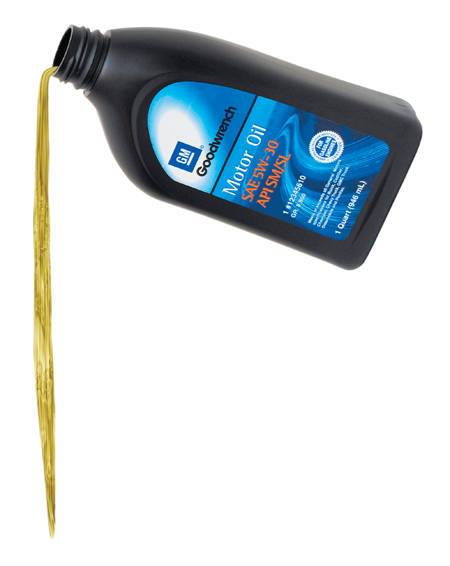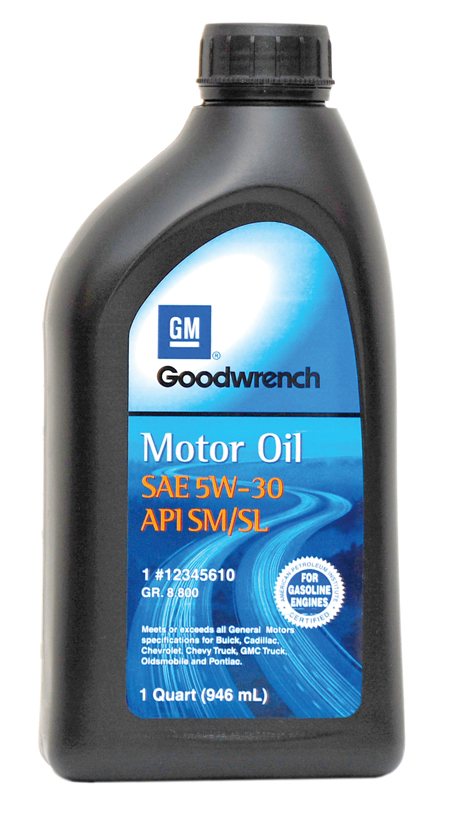Separating Fact from Fiction
[This page is reproduced from GM Techlink's December 2007 issue. Bob Olree was one of the authors of ASTM RESEARCH REPORT - Development of the Sequence IIIG Engine Oil Test.]
| Over the years there has been an overabundance of engine oil myths. Here are some facts you may want to pass along to customers to help debunk the fiction behind these myths. |  |
The Pennsylvania Crude Myth -- This myth is based on a misapplication of truth. In 1859, the first commercially successful oil well was drilled in Titusville, Pennsylvania.

A myth got started before World War II claiming that the only good oils were those made from pure Pennsylvania crude oil. At the time, only minimal refining was used to make engine oil from crude oil. Under these refining conditions, Pennsylvania crude oil made better engine oil than Texas crude or California crude. Today, with modern refining methods, almost any crude can be made into good engine oil.
Other engine oil myths are based on the notion that the new and the unfamiliar are somehow "bad."
The Detergent Oil Myth -- The next myth to appear is that modern detergent engine oils are bad for older engines. This one got started after World War II, when the government no longer needed all of the available detergent oil for the war effort, and detergent oil hit the market as “heavy-duty” oil.
Many pre-war cars had been driven way past their normal life, their engines were full of sludge and deposits, and the piston rings were completely worn out. Massive piston deposits were the only thing standing between merely high oil consumption and horrendous oil consumption. After a thorough purge by the new detergent oil, increased oil consumption was a possible consequence.
If detergent oils had been available to the public during the war, preventing the massive deposit buildup from occurring in the first place, this myth never would have started. Amazingly, there are still a few people today, 60 years later, who believe that they need to use non-detergent oil in their older cars. Apparently, it takes many years for an oil myth to die.
The Synthetic Oil Myth -- Then there is the myth that new engine break-in will not occur with synthetic oils. This one was apparently started by an aircraft engine manufacturer who put out a bulletin that said so. The fact is that Mobil 1 synthetic oil has been the factory-fill for many thousands of engines. Clearly, they have broken in quite well, and that should put this one to rest.
The Starburst Oil Myth -- The latest myth promoted by the antique and collector car press says that new Starburst/ API SM engine oils (called Starburst for the shape of the symbol on the container) are bad for older engines because the amount of anti-wear additive in them has been reduced. The anti-wear additive being discussed is zinc dithiophosphate (ZDP).
 |
 |
Before debunking this myth, we need to look at the history of ZDP usage. For over 60 years, ZDP has been used as an additive in engine oils to provide wear protection and oxidation stability.
ZDP was first added to engine oil to control copper/lead bearing corrosion. Oils with a phosphorus level in the 0.03% range passed a corrosion test introduced in 1942.
In the mid-1950s, when the use of high-lift camshafts increased the potential for scuffing and wear, the phosphorus level contributed by ZDP was increased to the 0.08% range.
In addition, the industry developed a battery of oil tests (called sequences), two of which were valve-train scuffing and wear tests.
A higher level of ZDP was good for flat-tappet valve-train scuffing and wear, but it turned out that more was not better. Although break-in scuffing was reduced by using more phosphorus, longer-term wear increased when phosphorus rose above 0.14%. And, at about 0.20% phosphorus, the ZDP started attacking the grain boundaries in the iron, resulting in camshaft spalling.
By the 1970s, increased antioxidancy was needed to protect the oil in high-load engines, which otherwise could thicken to a point where the engine could no longer pump it. Because ZDP was an inexpensive and effective antioxidant, it was used to place the phosphorus level in the 0.10% range.
However, phosphorus is a poison for exhaust catalysts. So, ZDP levels have been reduced over the last 10-15 years. It's now down to a maximum of 0.08% for Starburst oils. This was supported by the introduction of modern ashless antioxidants that contain no phosphorus.
Enough history. Let's get back to the myth that Starburst oils are no good for older engines. The argument put forth is that while these oils work perfectly well in modern, gasoline engines equipped with roller camshafts, they will cause catastrophic wear in older engines equipped with flat-tappet camshafts.
The facts say otherwise.
Backward compatability was of great importance when the Starburst oil standards were developed by a group of experts from the OEMs, oil companies, and oil additive companies. In addition, multiple oil and additive companies ran no-harm tests on older engines with the new oils; and no problems were uncovered.
The new Starburst specification contains two valve-train wear tests. All Starburst oil formulations must pass these two tests.
- Sequence IVA tests for camshaft scuffing and wear using a single overhead camshaft engine with slider finger (not roller) followers.
- Sequence IIIG evaluates cam and lifter wear using a V6 engine with a flat-tappet system, similar to those used in the 1980s.

Those who hold onto the myth are ignoring the fact that the new Starburst oils contain about the same percentage of ZDP as the oils that solved the camshaft scuffing and wear issues back in the 1950s. (True, they do contain less ZDP than the oils that solved the oil thickening issues in the 1960s, but that's because they now contain high levels of ashless antioxidants not commercially available in the 1960s.)
Despite the pains taken in developing special flat-tappet camshaft wear tests that these new oils must pass and the fact that the ZDP level of these new oils is comparable to the level found necessary to protect flat-tappet camshafts in the past, there will still be those who want to believe the myth that new oils will wear out older engines.
Like other myths before it, history teaches us that it will probably take 60 or 70 years for this one to die also.
- Thanks to Bob Olree – GM Powertrain Fuels and Lubricants Group
